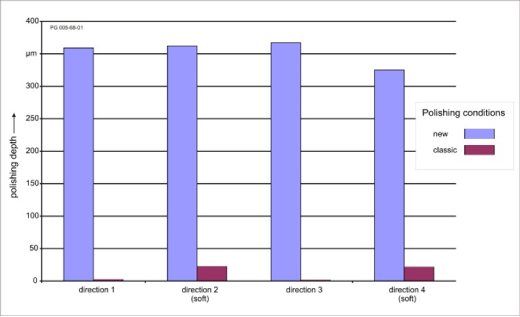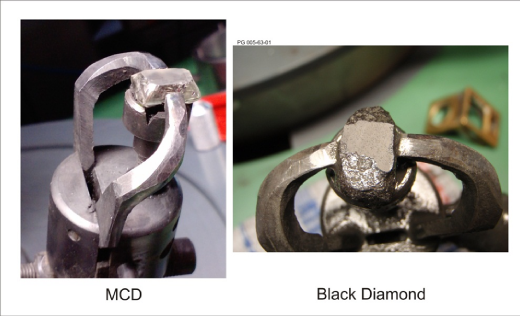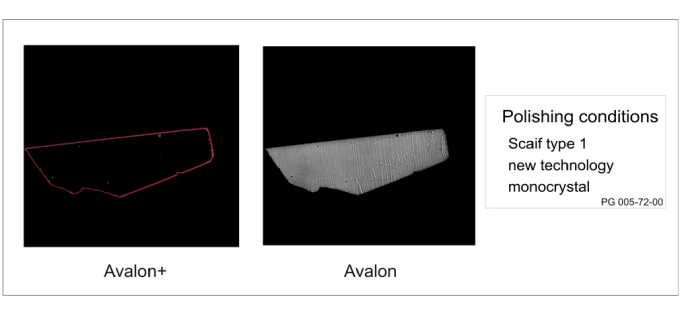
Grain independed polishing
Revolution in diamond polishing
Goal
The objective of this project is to polish diamonds in a save way independent of the grain directions. Besides this advantage,
it is also a cold process making it suitable for difficult diamonds containing a lot of strain.
Description
Within the classical polishing process, crystal orientation of the diamond determines the removal rate.
Therefore it is necessary to find the appropriate polishing direction (grain), which requires high skilled polishers.
Further, because of the substantial rise of temperature in the polishing zone, the classical polishing process imposes several technical restrictions.
The classical polishing and laser process are established techniques to process diamond. On the contrary to the classical diamond polishing the new patented technique is not only grain independent (as in the case of laser machining) - the process temperature can be controlled and is reduced to the maximum of 35°C, so it is a cold process. This increases the process safety for the stone.
Furthermore GIP is up to 10 times faster and less complex (grain independent) than classical polishing. Compared to laser sawing GIP is much safer and requires a lower investment. It allows also perfect machining of problematic and dangerous stones. All those points allow the production process not only to be more profitable but also to set a step in the world of automatic production.

Grain independency and the polishing speed of new technology
Target group
GEM manufacturers and industrial diamond applications.
Current status
There are two steps needed to complete the diamond polishing process. The first process stage is fast material removal.
WTOCD optimized this technology during intensive research period and tested it in the industrial environment by installing manual
pre-prototypes. Meanwhile the pre-prototypes are fully integrated in the production process of WTOCD partners.
Different types of diamond polished in the fast material removal process
It is not possible to reach the end surface quality directly in the first polishing step. Nevertheless the quality has improved to the greatest possible extend by reaching a smoothness of ±0,4 μm. This is a perfect starting point for the following processing step.
 Surface quality after material removal process
Surface quality after material removal processThe second polishing stage is formed by the finishing (“zoeten”) regime which is also developed and tested in the laboratories of WTOCD. To that aim an automated test setup has been constructed. The results obtained are very promising and feedback was positive from both quality grading and WTOCD partners.
 Quality achieved with new finishing process
Quality achieved with new finishing process
Funding
The project is co-financed by IWT (contract no.: 080720).
Future perspectives
The first step for the development of an automatic polishing machine has been set: the new, safe and cold polishing technology is developed and
tested in an industrial environment. The obtained results from this and earlier projects together with strategic decisions and needs of the
diamond industry form the basis for further steps and needed process improvements.